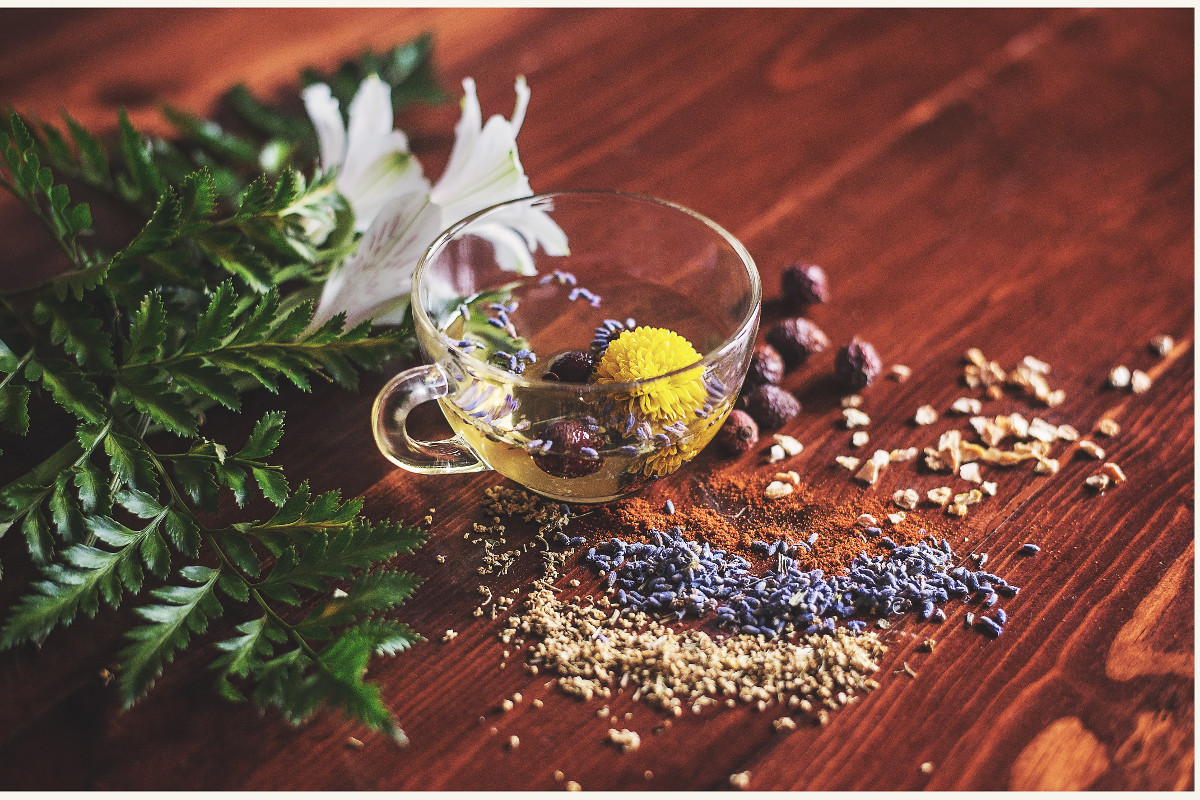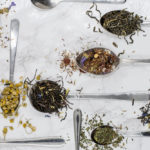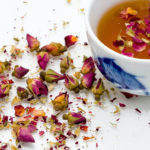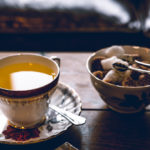All Australians can admit, nothing beats a good cup of tea!
Tea is the quintessential hot beverage for almost any occasion. It can be a wake-up stimulant for those dreaded early mornings, a simple digestif after hearty meals, or even just a nice break from all the chaos. But there’s one other thing that tea can do, and that’s how it can transport your senses to another world.
Of course, with current travel restrictions, it’s practically impossible to get that truly authentic tea experience – the kind that immerses you in beautiful cultures and aromatic atmospheres. So if you’re missing out on the flavours of Asia, Europe or even the Americas, have we got a treat for you!
While we wait for the world to reopen, Cathay Pacific is helping to infuse that authentic tea experience in Australian homes. Thanks to their longstanding partnership with JING – the world’s leading tea supplier – they’ve brought along Felicity Fowler, head of tea experiences, to share with us her four top tea-drinking tips for your next home brewing experience.
Felicity harnesses over a decade of tea expertise, having worked her way up the ranks at JING since 2010. Matched with her lifelong love of loose-leaf brewing, Felicity is essentially a tea aficionado. So, with her help, get ready to transport your senses across the globe – all from the comfort of your own home.
Tips How To Choose The Right Tea
- Tea selections on teaspoons. Photographed by Alice Pasqual. Image via Unsplash
When it comes to choosing the right tea, the first step is picking the right colour. And, as Felicity explains, green, white and black tea varieties are the most common favourites for tea drinkers.
“They’re packed with antioxidants, which deliver an array of different benefits – green contains an antioxidant known to stabilise free radicals and fight disease whereas black tea’s antioxidants help lower inflammation,” Felicity says.
“Before infusing your tea, choose a leaf that is most enjoyable for your palate. White tea will deliver light, delicate sweet flavours; green is perfect for those who enjoy a fresh grassy or vegetal taste; black is best for drinkers who want deep, rich flavours; and oolong tea has an intense aroma and experience.”
“It’s also important to note that all these teas, no matter what type, contain caffeine,” continues Felicity. “So, if you’re sensitive to the effects of caffeine you may want to switch to a herbal infusion later in the day.”
Tips On How To Properly Infuse Your Tea
- Rosebud tea. Photographed by Marco Secchi. Image via Unsplash
While many teas are served in bags, Felicity highly recommends dabbling in loose leaf teas. For these, we recommend buying yourself a teapot – and JING sells a selection of gorgeous glass or ceramic teapots which you can get delivered to your door.
“When made loose, the tea leaves have the space to unfurl and release more of their incredible flavour in each cup,” says Felicity. “You can also choose how much leaf you use – and so control how full-bodied, flavourful, or light your tea is – tailoring to your personal preferences.
“As a general rule: infusing 4grams of tea per 250millilitres of water for 4 minutes will give a great result.”
Of course, we have to remember that all tea is mostly made up of hot water. This is important to note because Felicity recommends using filtered water rather than boiling tap water. And while you may think that boiling tap water should purify it, some residual substances can remain.
“When it comes to water, it’s also worth noting your temperature,” says Felicity. “95-100 degrees brings out the strength and body from black and oolong teas, and 60-80 degrees is better for bringing out the delicate, fresh and sweet flavours of white and green teas.
“Top tip: for 60 degrees just add 40% cold water to your pot, for 80 degrees, add 20% cold water.
“Finally, don’t forget to decant the full pot once it’s infused,” continues Felicity. “Not only will this ensure the final drops – which include a lot of the flavour – are released but it also means the leaves are not left in the water, which can bring out bitter notes.
“Do this and they can be reinfused two (or even three) more times.”
Tasteful Tricks On What To Add To Your Tea
- Tea accompanied with a bowl of a sugar cubes. Photographed by John Tecuceanu. Image via Unsplash
While you don’t necessarily need to add anything to tea, it’s quite the norm to add milk and sugar to Earl Greys and English Breakfasts. But, as Felicity elaborates, it pays to be a little pedantic.
“If you love milky tea, consider choosing black tea from Assam in Northeast India,” she says. “For me, milk goes with Assam better than any other tea because the big malty flavour of Assam compliments the naturally occurring sugars in milk.”
It also pays to be pedantic with milk alternatives, which is a growing trend in Australia. As Felicity notes, aim for milk alternatives that aren’t too distinctive in flavour or too high in sugar, as they can change the taste entirely.
“Milk adds a thick, creamy texture and natural sweetness to tea,” she says, “so I recommend alternatives which are equally thick, such as Rebel Kitchen’s Barista Mylk, or even Oatly’s Creamy Oat for something even thicker and more indulgent.”
And as for sugar (or honey), this is simply a matter of personal preference.
“High-quality tea will often have a lot of natural sweetness to it, so when you’re trying a new tea, it’s always worth trying it without sugar first,” Felicity explains. Unless, of course, you’re having chamomile tea – which Felicity recommends mixing with honey: “The soft, meadowy hay flavour of chamomile pairs really well with honey.”
Tips On How To Enjoy Your Tea
- Drinking tea with finesse. Photographed by Pietra Schwarzler. Image via Unsplash
According to Felicity, enjoying tea goes beyond its actual consumption. Each step of the tea making process can bring a sense of mindfulness. From the feeling of the tea leaves in your hand to waiting for the kettle to boil and breathing in the rich aromas as your tea brews. But, there’s more to tea than simply enjoying every minute of it.
“One of the benefits of the world of single garden tea is the huge range of flavours, tastes and feelings to explore,” says Felicity, “and so finding the right ones for you throughout the day can be a fun adventure.”
“Try connecting your choice of tea to the seasons or your mood: green teas, which are only produced in spring, will refresh with cool and grassy flavours – and so tend to work really well during the spring months. Whereas black teas, produced in the hot summer months or later in the year, will provide warmth and comfort with their nutty, caramel or ripe fruit flavours.”
It’s even just as enriching to find teas for different parts of the day, and even for different moods. In the morning, we look for teas to help energise or wake us up – to which a delightfully caffeinated tea works wonders.
“I’d choose a breakfast-style tea and prepare it nice and strong, letting the leaves infuse for at least five minutes to release all of their flavours,” says Felicity. “Or one of my favourites first thing [in the morning] is an oolong from the Wuyi mountains – these oolongs are rich and incredibly enlivening.
“In the mid-afternoon, we often need a pick-me-up but something more gentle than the morning, and so at this time, I’ll often reach for the refreshment of green tea such as Dragon Well (Long Jing).
“And in the evenings, most of us will avoid caffeine, so I’ll go for something from the herbal infusion category – Chamomile Flowers and Whole Rosebuds are both super relaxing.”
Want to get a little adventurous with your tea drinking? Check out these 10 Best Sweet T2 Teas To Warm You Up This Winter. Looking for a sweet treat to pair with your freshly brewed cup of tea? Why not make the perfect afternoon snack, this Easy Zesty Shortbread Lemon Bars Recipe?








Just as how Oolong tea, an aromatic Chinese herb, can tickle your tastebuds thanks to its complex undertones and combination of black and green tea tastes.